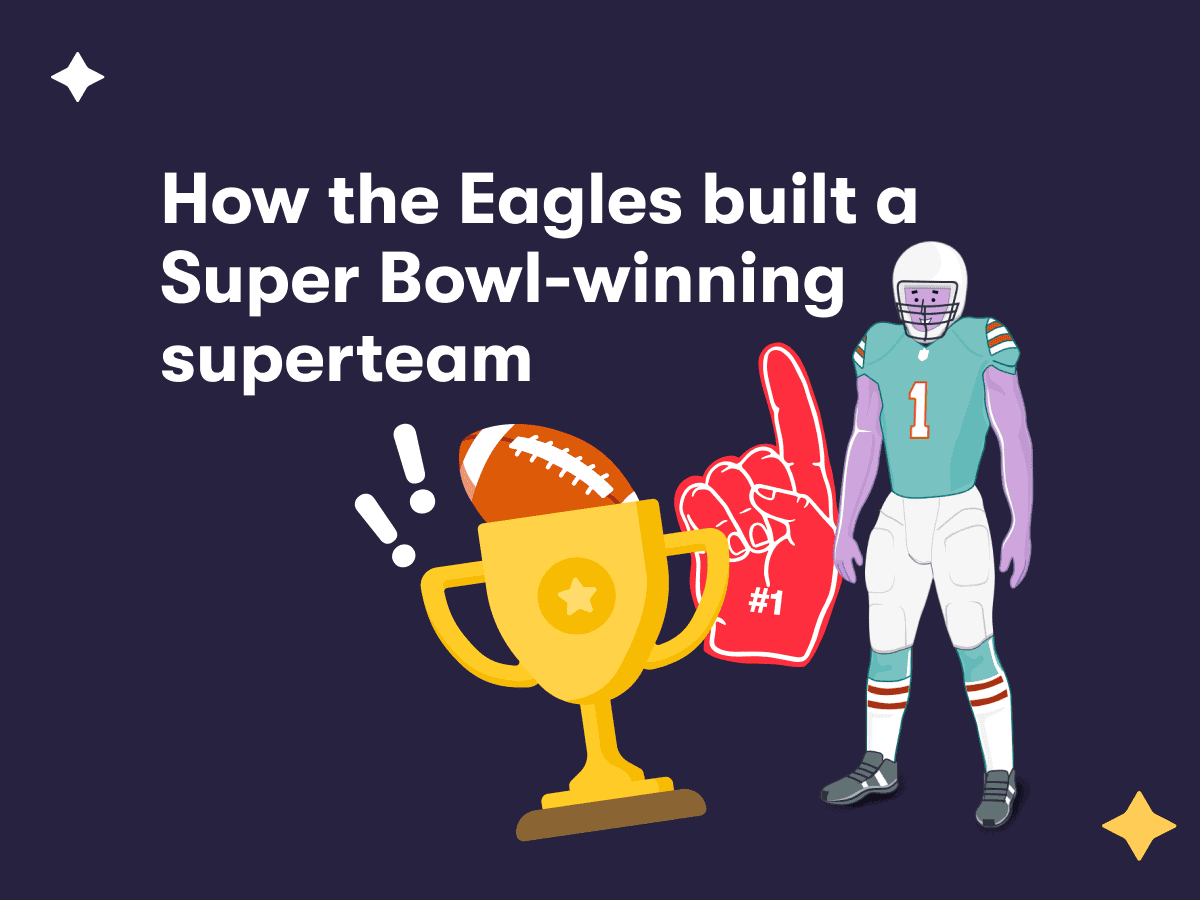One year ago, the Philadelphia Eagles were reeling from a nightmare season.
Having started the 2023 campaign by winning 10 of their opening 11 games, the Eagles suffered a historic collapse. They lost five of their last six regular-season games before a blowout defeat to the Tampa Bay Buccaneers in the wild-card round ended their season.
The future of head coach Nick Sirianni was in serious doubt. Quarterback Jalen Hurts endured a turnover-heavy season. The once-vaunted defense had become old and ineffective. Franchise stalwarts Jason Kelce and Fletcher Cox were retiring.
But fast-forward one season on, and the Eagles are Super Bowl champions once again after dismantling the dynastic Kansas City Chiefs — who were aiming for a three-peat — in a way few predicted.
So how did the Eagles rebound from a lost 2023 season to reach the pinnacle of football for the second time in franchise history?
Let’s examine the major decisions and strategies that got Philadelphia here.
Taking a risk on Saquon Barkley
Not only did the Eagles win the Super Bowl, they did so on the back of a star player signed away from one of their biggest rivals, the New York Giants.
Before a magical first season in Philadelphia, Barkley was viewed as a very good running back who never quite matched the hype that made him the second overall pick in the 2018 NFL Draft, with injuries and a poor supporting cast to blame.
Moreover, the value of running backs has been in decline for years. None of the last seven Super Bowl winners had a 1,000-yard rusher, let alone a highly paid star.
- 2023: Isaiah Pacheco — 935 yards (Chiefs)
- 2022: Isaiah Pacheco — 830 yards (Chiefs)
- 2021: Sony Michel – 845 yards (Rams)
- 2020: Ronald Jones — 978 yards (Buccaneers)
- 2019: Damien Williams —498 yards (Chiefs)
- 2018: Sony Michel — 931 yards (Patriots)
- 2017: Jay Ajayi — 873 yards (Eagles)
So while it’s easy to see why an Eagles-Barkley partnership worked so well in hindsight, signing him to a contract that made him the third-highest-paid player at his position was a significant risk.
But the reward was incredible. Barkley became just the ninth player in NFL history to rush for 2,000 yards in the regular season en route to winning Offensive Player of the Year.
Barkley finished third in MVP voting, produced a record seven touchdowns of 60-plus yards, and set numerous franchise marks.
He also made maybe the coolest play in NFL history:
Barkley might’ve had a quiet Super Bowl — 57 rushing yards and 40 receiving yards — as Kansas City focused all its efforts on stopping him. But he was arguably the main reason the Eagles were there in the first place.
Knocking early draft picks out of the park
How quickly a team rebounds from a slump like the Eagles suffered in 2023 can often come down to how successful you are in the draft.
Philadelphia desperately needed an injection of young talent on defense after the unit finished in 30th in scoring after allowing 51 touchdowns.
Widely acknowledged as one of the top general managers in the game, Howie Roseman produced a masterpiece in the 2024 draft to bolster other standout additions from the year before.
DeJean made one of the pivotal plays in the win over the Chiefs, intercepting quarterback Patrick Mahomes before running it back for a touchdown that gave the Eagles a 17-0 lead midway through the second quarter.
Carter and Smith were critical to the pass rush that sacked Mahomes six times — the most the quarterback had ever endured — and forced him into three turnovers.
Led by legendary defensive coordinator Vic Fangio in his first season with the club, the defense jumped from one of the league’s worst to one of its best in just a single year. And they did it thanks to a quartet of youngsters.
Performing salary cap wizardry
The salary cap in the NFL is intended to create more parity by limiting yearly spending to a hard figure set by the league.
However, while the cap does set a financial ceiling, teams willing to get creative can game the system to create significant advantages. The Eagles are the masters at this.
NFL contracts are complicated, but to put it simply, Philadelphia is willing to pay for flexibility.
Teams can structure contracts to backload a player’s salary — essentially borrowing money from future years — so they count less against the cap for the next few seasons.
The Eagles take this strategy to the extreme with the use of void years — extra seasons at the end of contracts that players will never be required to play on but can be used to spread out the cap cost of the deal even further.
To illustrate the advantage it gives the Eagles, here’s a financial comparison of the top of their salary cap and that of their Super Bowl opponents.
| Top five Eagles cap hits | Overall NFL rank | Top five Chiefs cap hits | Overall NFL rank |
|---|---|---|---|
| OT Lane Johnson — $15.87M | 64th | QB Patrick Mahomes — $37M | 4th |
| QB Jalen Hurts — $13.56M | 85th | G Joe Thuney — $26.97M | 14th |
| WR A.J. Brown — $11.88M | 105th | TE Travis Kelce — $19.55M | 49th |
| OT Jordan Mailata — $11.62M | 109th | OT Jawaan Taylor — $19.4M | 50th |
| CB Darius Slay — $10.66M | 123rd | S Justin Reid — $14.24M | 80th |
As I said, this comes at a cost. To structure deals this way, you have to open up the checkbook, paying players actual cash in advance. The Eagles were first in 2024 cash spending, shelling out $264.68 million, per Spotrac.
Philadelphia also has the most cap dollars in void years ($390.4 million), nearly double the San Francisco 49ers in second place ($204.1 million), according to Nick Korte of Over The Cap.
Philadelphia is paying its stars like average players. The financial flexibility created by that allowed the Eagles to load up on talent, creating the superteam that embarrassed the back-to-back reigning champions.
The bill will come due eventually, as deals manipulated like this will see cap hits balloon in later years.
But if you hit on your draft picks to gain cheap talent, and with the cap rising every year, it’s possible to always kick the can further down the road while you reap the rewards today – in the Eagles’ case, a Lombardi Trophy.








